![Sakata, Akira / Takeo Moriyama: Mitochondria [2 CDs] (Trost Records) Sakata, Akira / Takeo Moriyama: Mitochondria [2 CDs] (Trost Records)](https://www.teuthida.com/productImages/misc4/31600.jpg)
An absolutely intense sax drum duo recorded in Chiba Prefecture, Japan at Kashiwa Church in 1986 between free improvising saxophonist Akira Sakata and drummer Takeo Moriyama, two influential performers whose work began in the Yosuke Yamashita Trio in the early 70's, here in concentrated form for 18 improvisations, including a burning version of Albert Ayler's "Ghosts".
Out of Stock
Quantity in Basket: None
Log In to use our Wish List
Shipping Weight: 4.00 units
Sample The Album:
Akira Sakata-saxophone
Takeo Moriyama-drums
Click an artist name above to see in-stock items for that artist.
UPC: 9120036683525
Label: Trost Records
Catalog ID: TROST 217CD
Squidco Product Code: 31600
Format: 2 CDs
Condition: New
Released: 2022
Country: Austria
Packaging: Cardboard Gatefold 3 Panels
Recorded at Kashiwa Church, in Chiba Prefecture, in Japan, on May 24th, 1986, by Yukio Tezuka.
"Spectacular live recording from 1986 of two seminal figures of the Japanese avantgarde -- Akira Sakata on saxophone and Takeo Moriyama on drums. Mitochondria captures the reunion of the two free jazz masters, who started playing together in the Yosuke Yamashita Trio in 1972 until 1975. For both, the experience with the trio was an important step in the development of their own career and musicianship. The recordings are a remarkable performance in which each successfully highlights the essential elements of his playing while giving of room for the other musician.
Recorded at Kashiwa Church Chiba Pref. in Japan on May 24, 1986 by Yukio Tezuka on Sony stereo cassette recorder. Mixed by Jim O'Rourke, Mastered by Martin Siewert."-Trost
"When Akira Sakata spoke with The Wire's James Hadfield for a profile published in 2014, the clarinet and alto saxophone player looked back in the way that people who are about to turn 70 sometimes do. At the time, Sakata's assessment of the music he used to play with the Yosuke Yamashita Trio, the storied ensemble that broke Sakata to audiences outside of Japan in the mid-1970s, was "combat sport." Search out the Trio's music and you'll hear a band capable of turning on a dime, from steam-rolling free jazz blow-outs to ultra-tight ensemble passages; it's no wonder that they wowed the European jazz festival circuit.
The drummer who sparred with Sakata and pianist/bandleader Yamashita during those times was Takeo Moriyama. Both he and Sakata broke from Yamashita in the late 1970s to do other things: Moriyama to lead muscular, bop-rooted jazz bands, and Sakata to become a showbiz personality, marine biology researcher, and maker of much smoother music. When they reunited for the 1986 duo concert that yielded Mitochondria, free jazz was already part of their past. But if you know Sakata's 21st century work, you already know that he's not a guy to leave his skeletons in the closet. No, he'll take them out and dance around, and if the feelings run high enough, maybe get into a death-defying wrestling match with them. In recent years, when he's mainly played with the likes of Jim O'Rourke, Paal Nilssen-Love, and the duo Chikamorachi, old-style bones are the only bones he'll roll with, and he persistently makes them appear to be newly animated.
In 1986, when Sakata and Moriya reunited for the recording under consideration, no one had any reason to think that either guy knew where the closet keys were hidden. But the outcome of their reunion probably made some first-generation Japanese free jazz heads very happy. The two men didn't just reminisce about the glory days of a decade earlier when they convened at Kashiwa Church in Chiba prefecture; they drew upon that shared history of energy music to make some sounds that were compelling in the moment, and remain deeply affecting today, despite spending decades consigned to a cassette tape.
Sakata opens the concert, which is spread across two discs, with a gripping solo excursion on clarinet. He travels an intricate and unhurried melodic circuit before raising his first overblown hackles. Then Moriyama storms in with an irresistible barrage, steady and intense, but unevenly punctuated, so that it sounds more off-kilter than it is. Sakata switches to alto and punches out long, impassioned phrases that jab, feint and corkscrew. If these guys were old boxers, they might have been dressed more fancily, but they remained still in fighting trim.
Musical pugilism, however, is not all that happens here. If they're indeed looking back on the clarinet blues, "Tsui-oka (Reminiscence)," it's with palpable melancholy. And when Moriyama takes a solo on "Satsuki," he forgoes both genre signifiers and chops-flashing imperatives to build a stark, involving expression of movement and structure. Lest anyone have any lingering doubts where they were coming from, the first disc closes with a celebratory version of Albert Ayler's "Ghosts." Then it's on to "Chiasma," a tune by the Yosuke Yamashita Trio, whose hairpin shifts they take at a breakneck place. This isn't about showing that the guys still have what it takes; it's about them and their witnesses breathing the same air in the moment, and breathing it as one. Sakata's "Dance" is as convoluted and exhilarating as similar vintage Anthony Braxton, and "Wann kann Ich sie wiedersehen" closes the proceedings on a note of rawly expressed sentiment. Sakata would not play like this a lot in the coming decade or two, but you can take his wooly blowing as an early affirmation that he would remember and he would be back."-Bill Meyer, Dusted Magazine
Also available on vinyl LP.Get additional information at Dusted Magazine
Artist Biographies
• Show Bio for Akira Sakata "Akira Sakata (坂田明; born 21 February 1945 in Kure, Hiroshima) is a Japanese free jazz saxophonist. Sakata began studying music seriously at high school, where he played clarinet.[1] He played alto sax in a jazz band when at Hiroshima University.[1] He trained as a marine biologist. Sakata joined the Yamashita Yosuke Trio from 1972 till 1979 and toured internationally with them. In 1986, he performed with Last Exit with Bill Laswell. This performance was released as 1987's Noise of Trouble: Last Exit Live in Tokyo. Laswell went on to play bass on and produce Sakata albums such as Mooko, Silent Plankton and Fisherman's.com, the last of which also featured the reclusive Pete Cosey (who had worked with Miles Davis) on guitar.[2] In 1994, Sakata organized a one-month tour of Uzbekistan, Mongolia and China with the Flying Mijinko Band, consisting of 14 members from Japan, Africa and America. Some of those included were Laswell, Anton Fier and Foday Musa Suso. He has more recently worked with DJ Krush[3] and Chikamorachi (Darin Gray and Chris Corsano)." ^ Hide Bio for Akira Sakata • Show Bio for Takeo Moriyama "Takeo Moriyama (森山 威男, Moriyama Takeo, born January 27, 1945 in Katsunuma (present Kōshū) in Yamanashi Prefecture) is a Japanese jazz drummer. Moriyama played piano as a child before switching to drums in his late teens. He then attended the Tokyo University of the Arts, taking a degree in percussion performance. He joined Yosuke Yamashita's small group in 1967, and went on several international tours with the group until leaving it in 1975. He moved to Nagoya in 1977 and began leading his own groups. In addition to Yamashita he has performed or recorded with Aki Takase, Akira Miyazawa, Fumio Itabashi, Masahiko Satoh, Peter Brötzmann, Nobuyoshi Ino, Takehiro Honda, and Manfred Schoof." ^ Hide Bio for Takeo Moriyama
7/15/2025
Have a better biography or biography source? Please Contact Us so that we can update this biography.
7/15/2025
Have a better biography or biography source? Please Contact Us so that we can update this biography.
Track Listing:
CD1
1. Archezoa (7:12)
2. Mitochondria (10:34)
3. Hachi (7:50)
4. Tsui-oku (reminiscence) (10:21)
5. Satsuki (9:11)
6. Ghosts (5:29)
CD2
1. Chiasma (8:50)
2. Dance (12:50)
3. Wann kann Ich Sie Wiedersehen (14:11)
Improvised Music
Free Improvisation
Jazz
Asian Improvisation & Jazz
Duo Recordings
Saxophone & Drummer / Percussionist Duos
New in Improvised Music
Search for other titles on the label:
Trost Records.


![Sakata, Akira / Takeo Moriyama: Mitochondria [2 CDs] (Trost Records) Sakata, Akira / Takeo Moriyama: Mitochondria [2 CDs] (Trost Records)](https://www.teuthida.com/productImages/full/31600.Full.jpg)

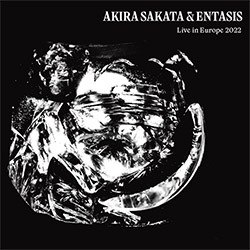

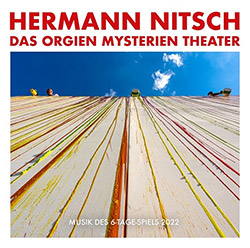


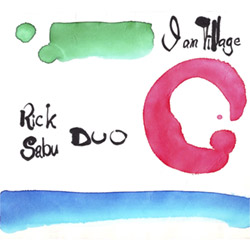

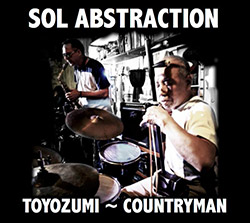



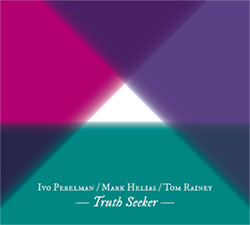


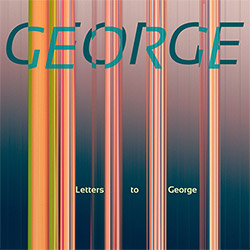
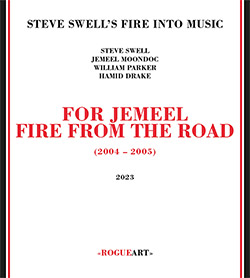

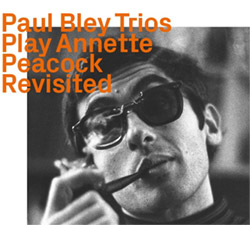
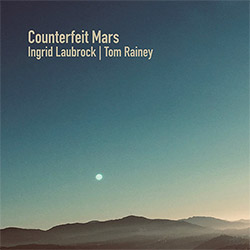
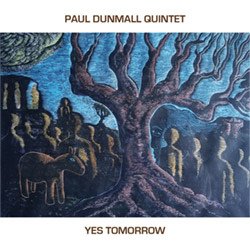

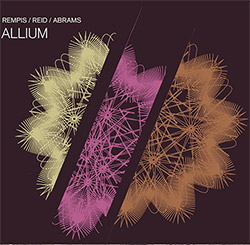


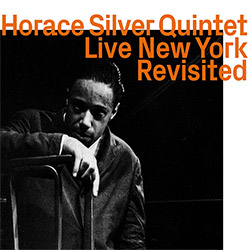



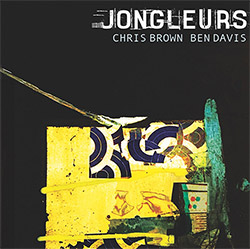
![BlueRing Improvisers: Materia [2 CDs]](https://www.teuthida.com/productImages/misc4/36513.jpg)




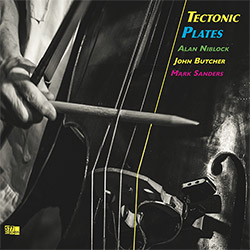



![Wheelhouse (Rempis / Adasiewicz / McBride): House And Home [VINYL]](https://www.teuthida.com/productImages/misc4/36462.jpg)
![+DOG+: The Light Of Our Lives [2 CDs]](https://www.teuthida.com/productImages/misc4/36009.jpg)


![Parker, Evan / Jean-Marc Foussat: Insolence [VINYL]](https://www.teuthida.com/productImages/misc4/36398.jpg)










![Deupree, Jerome / Sylvie Courvoisier / Lester St. Louis / Joe Morris: Canyon [2 CDs]](https://www.teuthida.com/productImages/misc4/36404.jpg)



![Eventless Plot | Haarvol: The Subliminal Paths [CASSETTE + DOWNLOAD]](https://www.teuthida.com/productImages/misc4/36232.jpg)










![Eventless Plot | Francesco Covarino: Methexis [CASSETTE + DOWNLOAD]](https://www.teuthida.com/productImages/misc4/36231.jpg)



![Das B (Mazen Kerbaj / Mike Majkowski / Magda Mayas / Tony Buck): Love [VINYL]](https://www.teuthida.com/productImages/misc4/36329.jpg)


![Eternities: Rides Again [CASSETTE]](https://www.teuthida.com/productImages/misc4/36247.jpg)
![Lopez, Francisco: Untitled (2021-2022) [2 CDs]](https://www.teuthida.com/productImages/misc4/36438.jpg)






![Money : Money 2 [2 CDs]](https://www.teuthida.com/productImages/misc4/35894.jpg)




![Klinga, Erik: Elusive Shimmer [VINYL]](https://www.teuthida.com/productImages/misc4/36258.jpg)
![CHANGES TO blind (Phil Zampino): Volume 9 - I Wave on a Fine Vile Mist [CD + DOWNLOAD]](https://www.teuthida.com/productImages/misc4/36061.jpg)

![Wallmart / Rubbish: Asset Protection [split CD]](https://www.teuthida.com/productImages/misc4/35900.jpg)


![+Dog+: The Family Music Book Vol. 5 [2 CDs]](https://www.teuthida.com/productImages/misc4/35897.jpg)
![Kuvveti, Deli : Kuslar Soyledi [CASSETTE w/ DOWNLOAD]](https://www.teuthida.com/productImages/misc4/36107.jpg)

![Brown, Dan / Dan Reynolds: Live At The Grange Hall [unauthorized][CASSETTE]](https://www.teuthida.com/productImages/misc4/36245.jpg)








![Palestine, Charlemagne / Seppe Gebruers: Beyondddddd The Notessssss [VINYL]](https://www.teuthida.com/productImages/misc4/36206.jpg)
![Palestine, Charlemagne / Seppe Gebruers: Beyondddddd The Notessssss [NEON GREEN VINYL]](https://www.teuthida.com/productImages/misc4/36207.jpg)

![Laubrock, Ingrid: Purposing The Air [2 CDs]](https://www.teuthida.com/productImages/misc4/35639.jpg)

![Yoko, Ono / The Great Learning Orchestra: Selected Recordings From Grapefruit [2 CDs]](https://www.teuthida.com/productImages/misc4/35841.jpg)









![Zorn, John / JACK Quartet: The Complete String Quartets [2 CDs]](https://www.teuthida.com/productImages/misc4/35609.jpg)

![Lonsdale, Eden: Dawnings [2 CDs]](https://www.teuthida.com/productImages/misc4/35480.jpg)



![Sorry For Laughing (G. Whitlow / M. Bates / Dave-Id / E. Ka-Spel): Rain Flowers [2 CDS]](https://www.teuthida.com/productImages/misc4/35985.jpg)

![Rolando, Tommaso / Andy Moor : Biscotti [CASSETTE w/ DOWNLOADS]](https://www.teuthida.com/productImages/misc4/36106.jpg)


![Electric Bird Noise / Derek Roddy: 8-10-22 [CD EP]](https://www.teuthida.com/productImages/misc4/35970.jpg)








![Elephant9 : Mythical River [VINYL]](https://www.teuthida.com/productImages/misc4/34624.jpg)



![Elephant9 with Terje Rypdal: Catching Fire [VINYL 2 LPs]](https://www.teuthida.com/productImages/misc4/35355.jpg)
![Deerlady (Obomsawin, Mali / Magdalena Abrego): Greatest Hits [VINYL]](https://www.teuthida.com/productImages/misc4/34876.jpg)







![Surplus 1980: Illusion of Consistency [CD]](https://www.teuthida.com/productImages/misc4/35069.jpg)
![Staiano, Moe: Away Towards the Light [VINYL + DOWNLOAD]](https://www.teuthida.com/productImages/misc4/35037.jpg)
![Coley, Byron: Dating Tips for Touring Bands [VINYL]](https://www.teuthida.com/productImages/misc4/17906.jpg)

![Lost Kisses: My Life is Sad & Funny [DVD]](https://www.teuthida.com/productImages/misc4/lostKissesDVD.jpg)